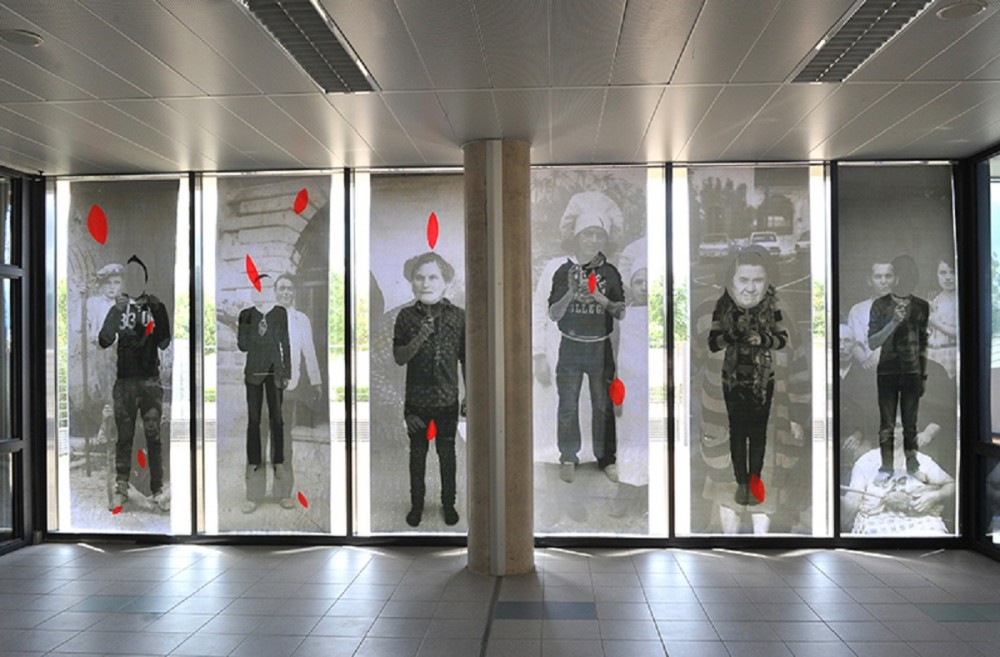
Salvatore Puglia, Interview (Part II)
Once upon a time, we were fully in Europe
Antidot: In Paris, you broke all ties with your previous life. How long did you stay in France, and did you ever have any regrets?
Puglia: The fact is that I cannot live in my native country without being politically and socially involved, and living abroad allowed me to devote myself exclusively to my work and to subsist on it. I was doomed to live from my work.
Moreover, I could no imagine going back to Italy saying, “I was wrong, actually I am not a historian, I am an artist”. And I was grateful to France for having given me the earliest feedback to my artistic activity; even if it originated from a group of friends, my first artistic endeavors in France nonetheless meant a recognition of my choice.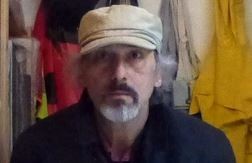
For almost twenty years, I used Paris as my home base: I had five or six different studios around the city; I undertook residencies in Nordic countries and the Netherlands; I had a studio in Brussels for several months, and beginning in 1990 I spent long time periods in Berlin, a city to which I was drawn owing to the presence of several good friends but also to the passion for “our” history that is instilled in me.
When my daughter was born in 2006, I moved to the South of France. Since then, my work has become less a research activity per se but rather a re-utilization of the documents I compiled over the years. Therefore in a certain sense, one could say that I am working on my own archives and my own history.
Antidot: If we try to find distinguished markers of your art, which one should it be? In other words, can you help me map your art’s DNA? (From the top of my head, the most obvious markers would been history, ruins, memory, shadow...)
Puglia: I recognize traces of my works in each of those markers, and I could maybe synthetize them with the word “melancholy”. I have always been influenced by short excerpts or quotations that I encountered while reading books. A short novel by the Romantic age Adelbert von Chamisso has guided me for many years: the story of Peter Schlemihl, who sells his shadow to the devil in exchange for whatever he could desire, but eventually cannot exist without his immaterial shadow. And a note from Kierkegaard on a “reflexive melancholy”: It is this thoughtful grief that I intend to evoke and, as much as possible, to illustrate with some examples. I call them shadows, to remind by this name that I borrows them from the dark side of life and because, like shadows, they are not spontaneously visible (Google translation).
But I am not a theorist and prefer to talk about my works through episodes and encounters.
In the spring of 1990, a few months after the fall of the “iron curtain”, I went to Berlin to visit friends and remember walking through the Tiergarten to the sound of hundreds of hammers hitting what was left of the Wall.
During that same trip, I came upon a large flea market in the district of Potsdamerplatz, which became a huge wasteland being bombed during the Second World War. It seemed as if all the inhabitants of East Germany were there to sell off their few goods and especially their own histories. One could buy Soviet memorabilia, old sewing machines and bicycles, but mostly paper documents and family photos. It was at this point that the course of my artistic work changed, and I started working on found images and documents.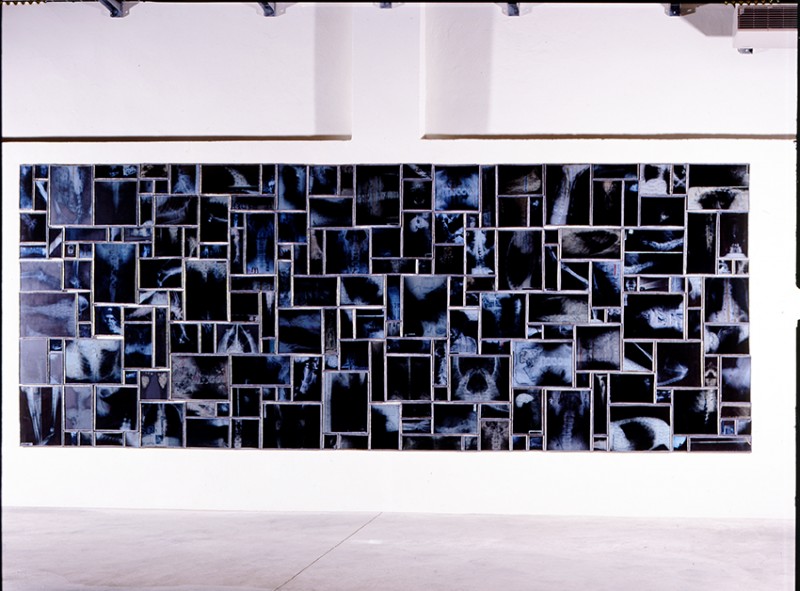
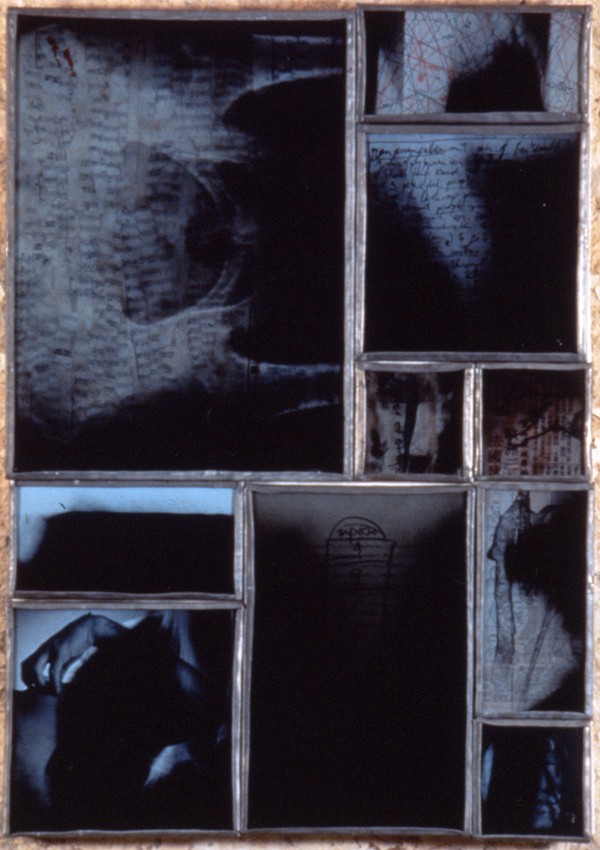
My first major installation, Aschenglorie, comprised pieces collected in Potsdamerplatz, while the following Vanitas,
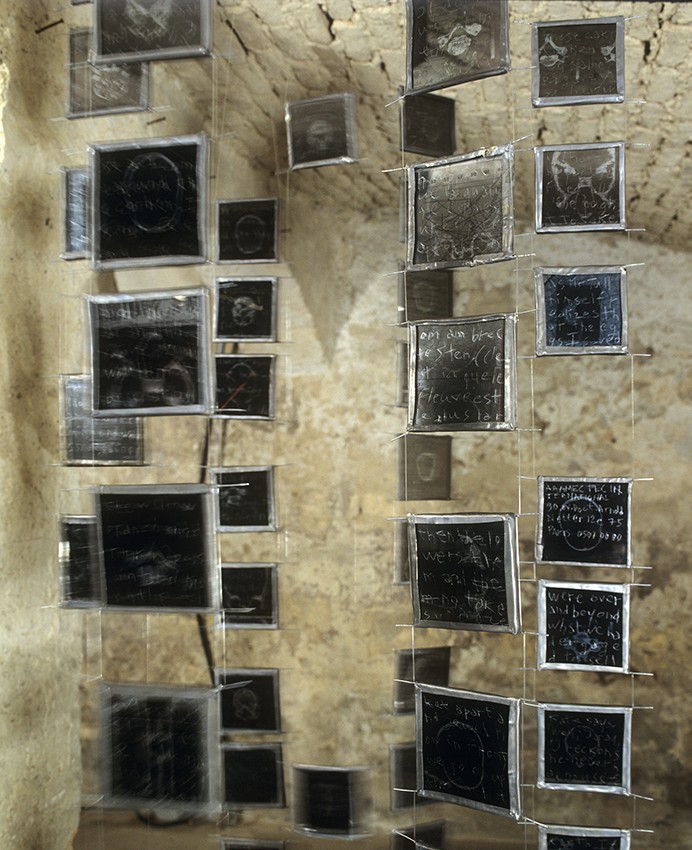
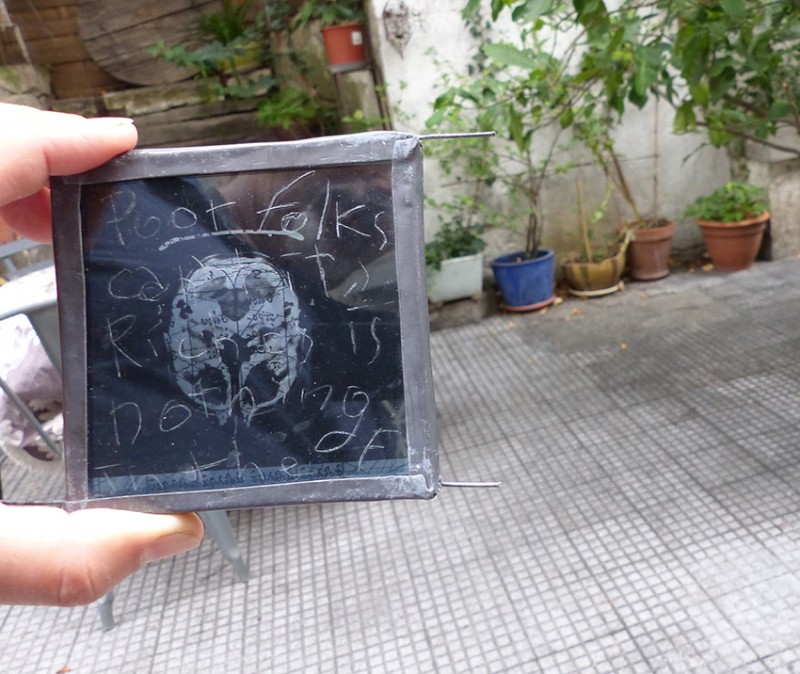
Über die Schädelnerven did more intentionally use images from archives of psychiatrists or other types of doctors. I also used numerous x-rays plates in those years. I considered x-rays to be both a form of writing of the body and a translucent, negative screen through which the viewer can distinguish, and possibly decipher the image.
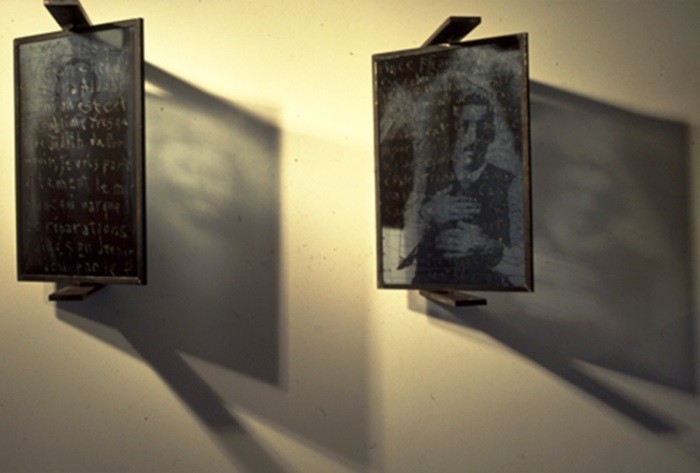
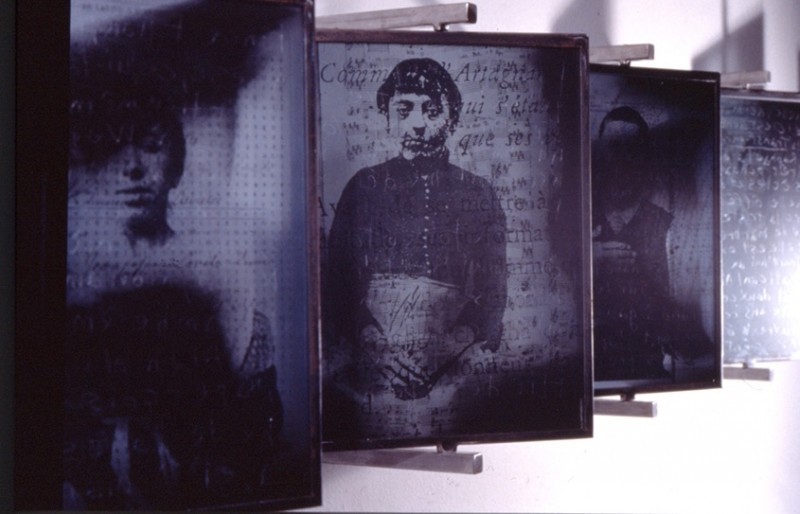
Antidot: We reached the year 1997, but we forgot to mention globally important event: the fall of the Berlin Wall. How did it affect you, politically and artistically?
Puglia: As I mentioned previously in the anecdote regarding the Potsdamerplatz flea market, 1989 marked the return of History with a capital H in my work, along with the use of photography, which can be considered the principal witness of last events of the last century. Henceforth, Communism was a thing of the past.
Politically, it was the myth of Communism itself, apart from its much frequent totalitarian drifts, which was shattered. To see TV images of hordes of people fleeing their country, like today’s refugees, had a tremendous symbolic impact. The choice I made in 1977 to cease direct political involvement and do what I can do by myself and along with a group of friends was somehow confirmed. And I continue to view artistic commitment as a form of political action. In fact, it is an esthetical engagement: if it is good, it is art, and it is political to the extent that it can influence and change in people’s thoughts and feelings.
Antidot: In this conversation, we have reached the last decade of the XX century. Many millenarianists and catastrophy believers have proclaimed that the end of the world is near and, as it relates to the Balkans, it would they might be correct: the JNA's bombardment of Dubrovnik, the siege of Sarajevo (the longest in the history of modern warfare), the genocide in Bosnia... What is your feeling about the doomsday of our civilization?
Puglia: Indeed, in the 1990s, we saw a return of warfare in Europe. We felt hopeless, powerless. European politicians did not help much, Americans were perhaps more effective, for the best and the worst. A well-known Italian writer obtained a truck driver’s license and transported food to Bosnia. A friend of mine died in a plane crash in the Croatian mountains, during a humanitarian mission. I didn’t have their courage, even though I didn’t have a family at the time.
I reacted as I felt: artistically. In a show in Rome in 1999, I presented an installation featuring enlarged photographs of various Italian historic monuments taken during World War II in 1940. It was entitled Protection of the national artistic heritage from wartime aerial attacks. My intention was to highlight works of art that were covered with sandbags and scaffolding and removed from the gaze of spectators for whose benefit they had been conceived. They appear to us in the limbo of an announced catastrophe. 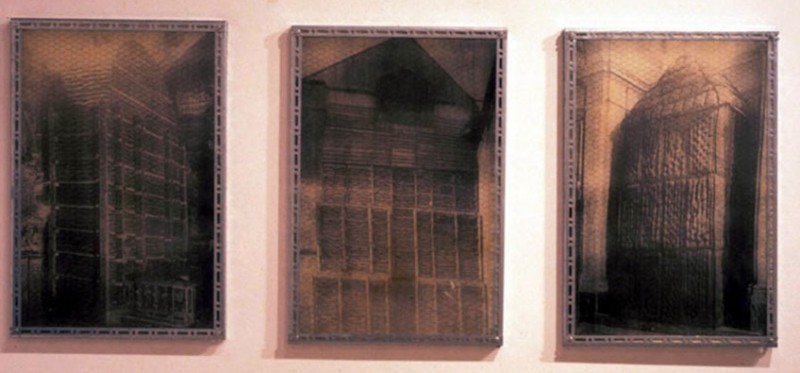
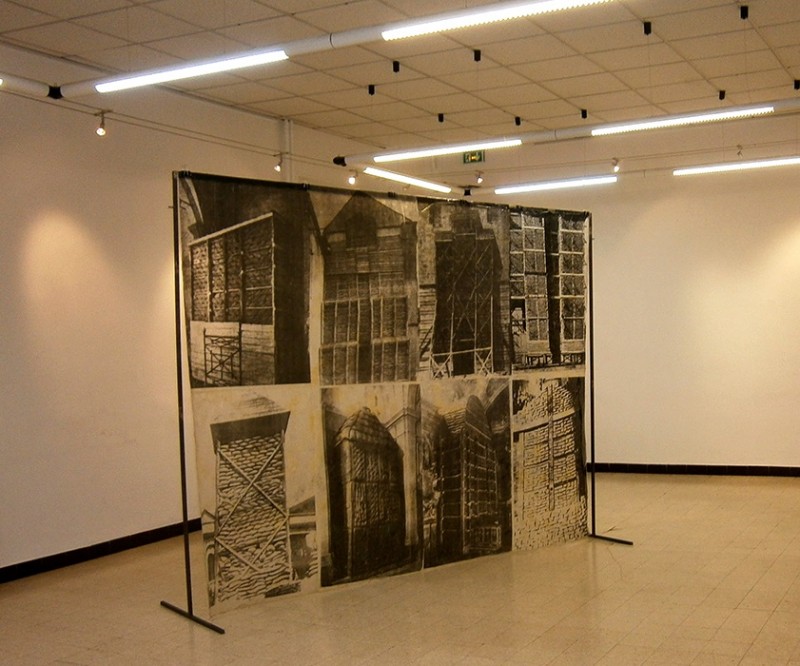
In 2000, participating in a group show in Copenhagen called Models of Resistance, I requested UNESCO, the UN agency dealing with culture, to protect my own personal monuments, in accordance with the Hague Convention of 1954 concerning the protection of cultural property in the event of armed conflict.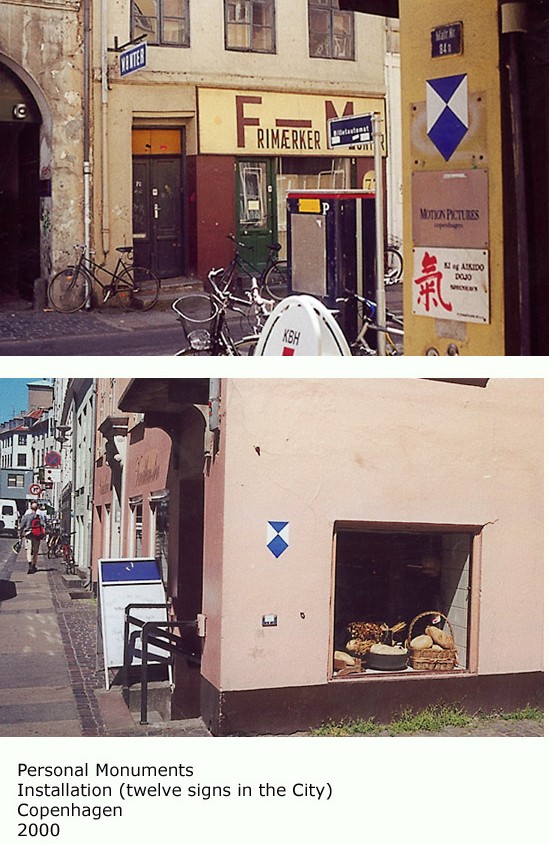
The same year, I presented another ‘political’ installation, a parachute as a sheltering space, where anyone could step in, get a glass of water or wine and find somebody to talk to. But as it was set up in the courtyard of an art institute, there was little likelihood that a “real” refugee would participate. 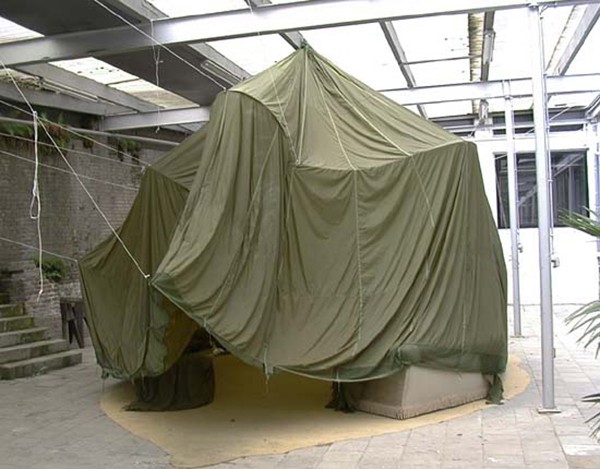
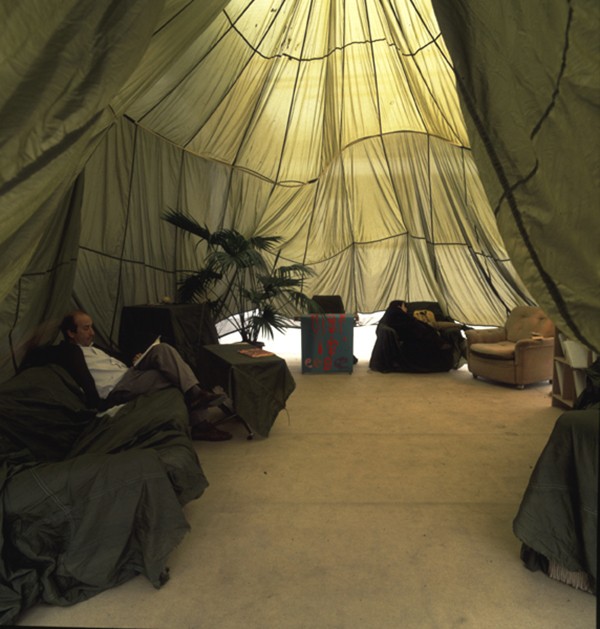
A couple of years later I presented in my studio in Paris an installation entitled Four Theses on the Aesthetics of Fascism. There was L’art de la guerre (the work on the wrapped Roman monuments mentioned previously) but also pieces mentioning Albert Speer’s aesthetics of the ruins (the Ruinenwerttheorie) and others about the Balilla, the children from six to twelve years old who were inducted into the numerous paramilitary units under Italian fascism.
Antidot: The New Millennium kicked off with a possible technological error related to our computers - the Millennium Bug. But the real problem was rather an Anthropological Error, built in our species - humankind was evidently going astray, lost on self--destroying path... What can artists do as times get hard?
Puglia: I have three children and I feel the responsibility of the burden I am leaving them. They will face hard times or maybe only their grandchildren will go through such times. They will have to fight, and I have no doubt that they will do it, because already they don’t accept the idea that “there is no alternative”. I doubt that the alternative will be raising goats on a pristine mountain, even though that could also be possible. At the same time, I doubt that creating works of art represents a form of resistance to the world as it is. It is simply a matter of scale and audience. A work of art doesn’t reach a large enough public to move things. It is a form of witnessing, which is also necessary for me.
Works of art don’t save lives. Maybe I should have obtained a truck driver’s license.
Antidot: Woke up this morning to the news that Peter Handke has won the Nobel Prize in Literature this year! Sir Salman Rushdie named Handke“Moron of the Year” in an article for The Guardian in 1999 for his “series of impassioned apologias for the genocidal regime of Slobodan Milosevic”. Your thoughts on official prizes and awards?
Puglia: I too was surprised. Handke was a great writer in the 1970s, and then I don’t know what happened to him. Usually, the literature Nobel prize is rather political and awards authors somehow in the opposition (like Dario Fo in Italy, when Berlusconi was prime minister). I don’t understand this recent decision. Next question please.
Antidot: Let us know talk about the most recent period; when first encountered your work (via Internet). I remember, when I saw your photographs covered with X-ray images, I asked myself a question: "What would Hans Castorp, the main protagonist of the Thomas Mann's novel The Magic Mountain, say if he had found such an artifact in his wallet instead of Madame Chauchat X-ray photo? The X-ray image from the novel was coming from the realm of Death (i.e. Medicine), yours from ... What Source?".
Puglia: As I mentioned, I used X-rays images in my work as a language of the body itself and as a screen to blur vision. If we refer to bodies and signs, we mean anatomy; we speak of the body opening to allow the retrieval of signs. Therefore, such signs will make it possible to open up to the experience of other bodies and other things. Indeed, I positioned myself as an artist-anatomist.
My techniques (techniques are political) have always involved transpiercing the image, and I have been committed to"anamnestic responsibility", which is neither an empty exaltation of memory, nor the evocation of pathos around historical horror.
My responsibility as an artist begins with the saturation of the image, in the contaminated field where the distinction between apology and denial, commemoration and refusal is unclear and undetermined.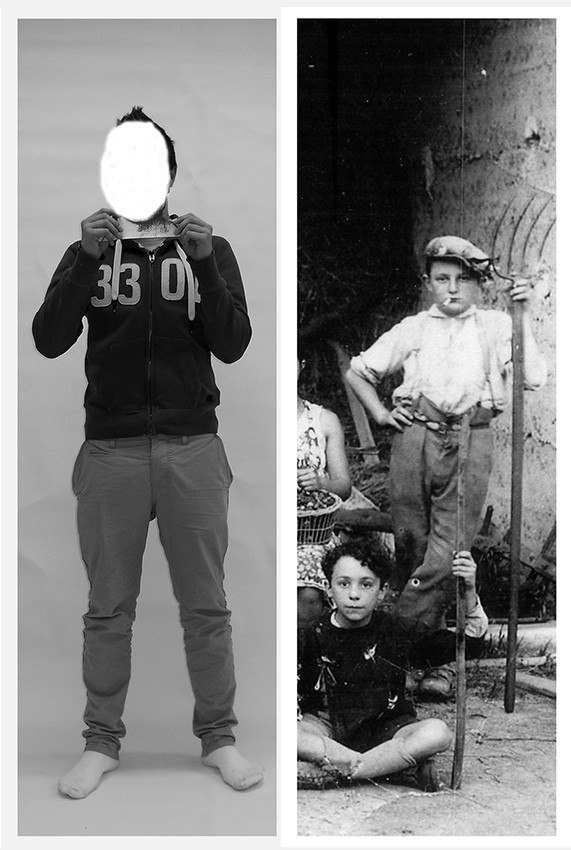
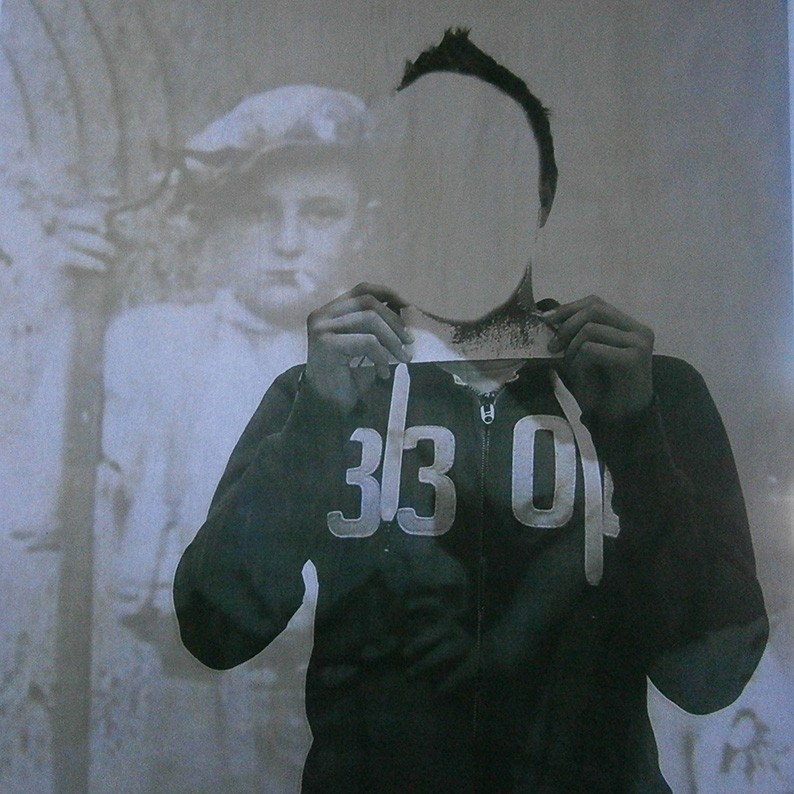
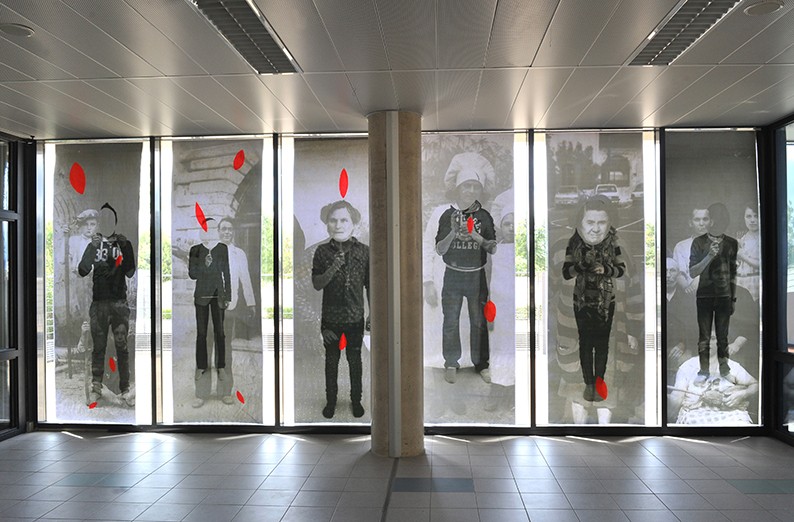
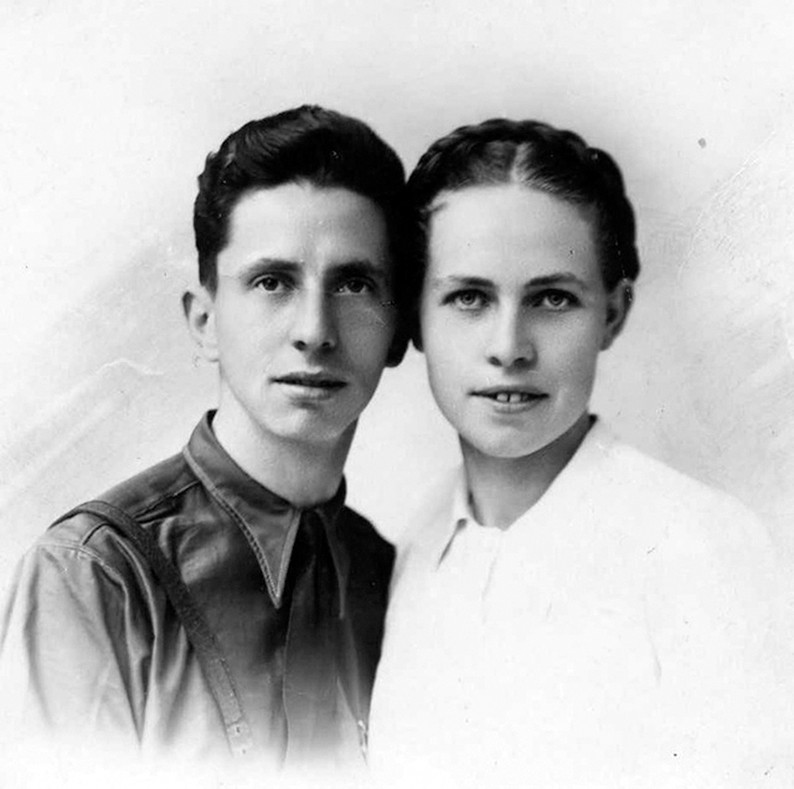
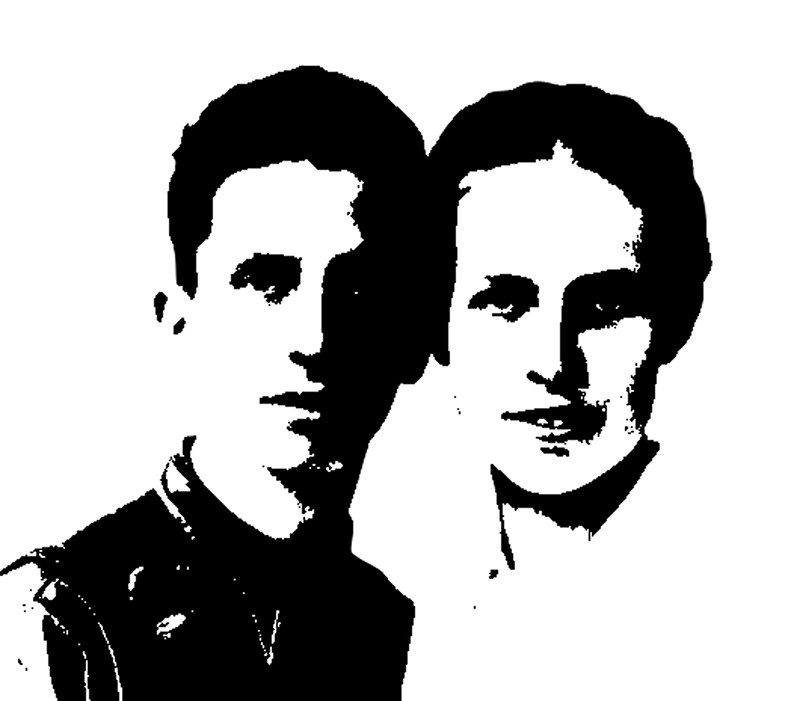
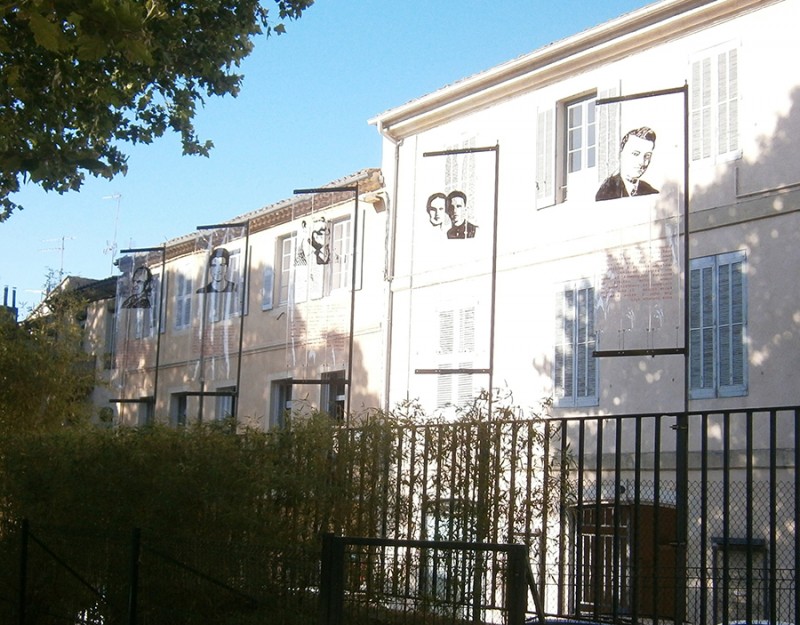
But one must mistrust the need to “say”; one should trust oneself and his own history and just continue doing what has to be done, with no intentions and little reflection. I hope that I have been succeeded in just doing that..jpg)
